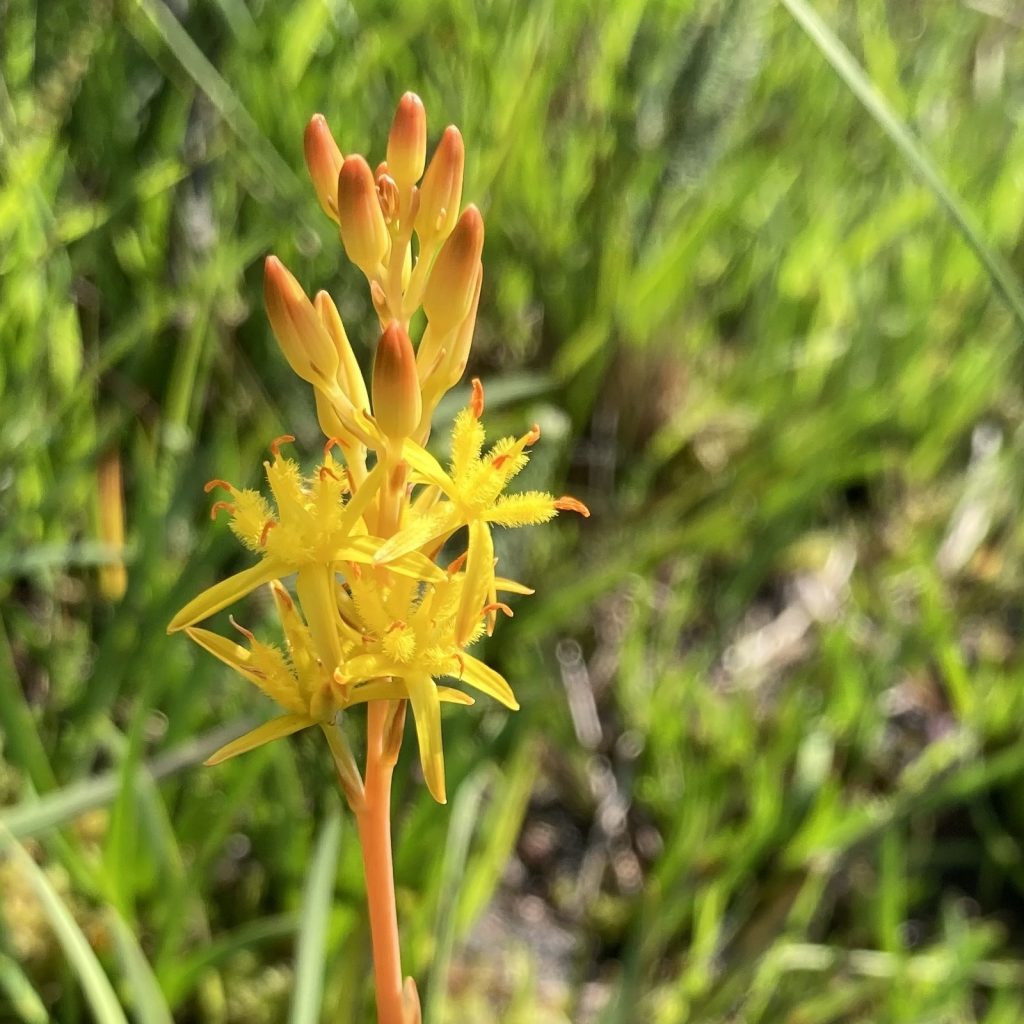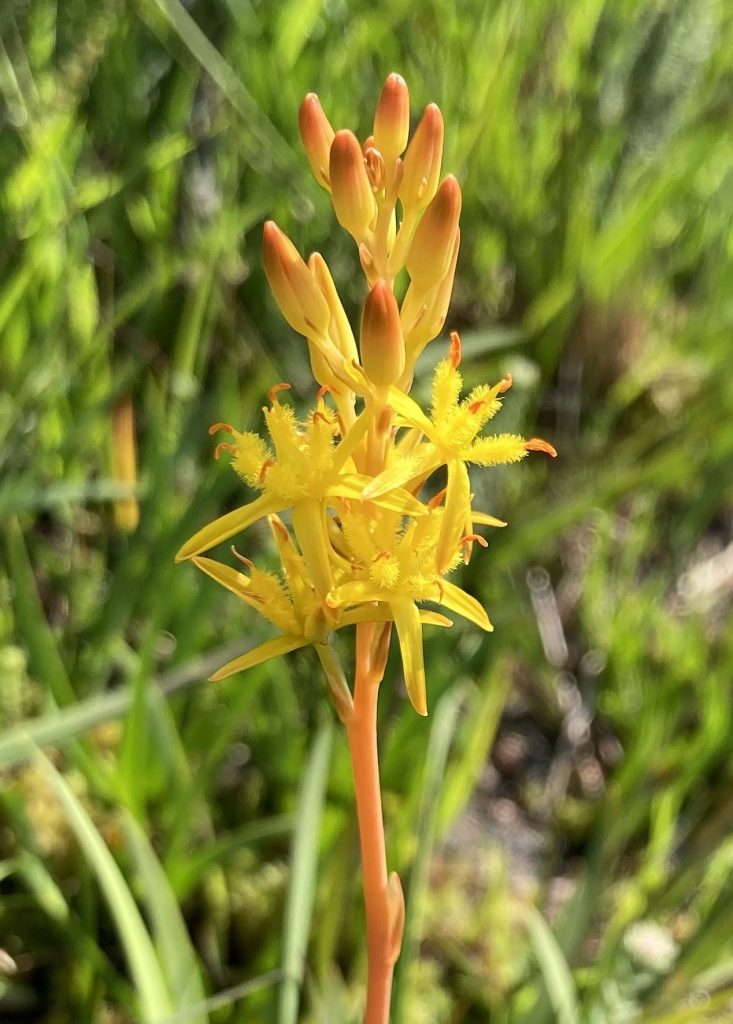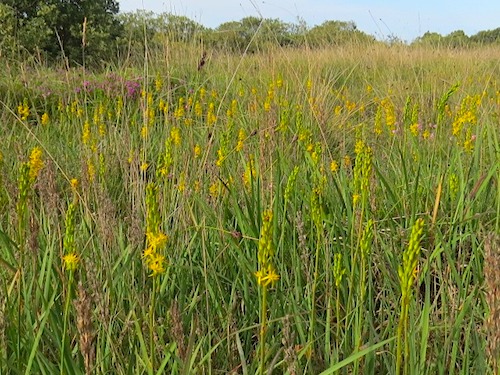
This bright plant of boggy areas on the heathland puts on an amazing display in early summer.
Photo: Amanda Scott
Scientific name: Narthecium ossifragum
Other common names: Bone-breaker
What to look for:
• Family: Liliaceae (Lily family).
• Flowers: Yellow, star-shaped flowers with six perianth (outer) segments and orange anthers and woolly looking filaments (part of the stamen).
• Leaves: Leaves are mainly at the plant base, curved, and up to 20 cm long; some shorter leaves on the stem.
• Height: Up to 10 to 40 cm.
• Where: Damp heathland.
• When: July to September.
• Habit: Creeping, upright.
The vivid yellow, starry flowers of Bog Asphodel with their fiery orange-tipped stamens brighten up heathland in the summer months. Come the autumn fruiting period, the plant changes to a predominantly tawny orange, remaining a cheerful sight, even on a murky day.
The flowers are borne in spikes in early to mid-summer, and the narrow leaves are mainly basal. It grows and spreads via rhizomes, and also produces seeds. The plant is self-pollinating – pollen is transferred from the male anthers to the female stigma via rainwater.
Bog Asphodel prefers bogs in calcium-poor heathland, and from this comes its old reputation of causing brittle bones in sheep feeding on the plants. It was in fact the lack of calcium in the fields where the sheep grazed that caused this condition. Even so, this lovely plant still sometimes goes by the name of Bonebreaker.
The vivid yellow, starry flowers of Bog Asphodel with their fiery orange-tipped stamens brighten up heathland in the summer months. Come the autumn fruiting period, the plant changes to a predominantly tawny orange, remaining a cheerful sight, even on a murky day.

The flowers are borne in spikes in early to mid-summer, and the narrow leaves are mainly basal. It grows and spreads via rhizomes, and also produces seeds. The plant is self-pollinating – pollen is transferred from the male anthers to the female stigma via rainwater.
Bog Asphodel prefers bogs in calcium-poor heathland, and from this comes its old reputation of causing brittle bones in sheep feeding on the plants. It was in fact the lack of calcium in the fields where the sheep grazed that caused this condition. Even so, this lovely plant still sometimes goes by the name of Bonebreaker.
Did you know…?
…In the west and north of Britain, Bog Asphodel was sometimes used instead of saffron in food, or as a hair-dye.
More information and references:
Bates, R. and Scolding, B., 2002. Wild Flowers of The Lizard. Cornwall County Council, Truro.
Mabey, R., 1997. Flora Britannica. Chatto & Windus, London.
Rose, F. and O’Reilly, C., 2006. The Wild Flower Key, 2nd edition. Frederick Warne, London.

Published: July 2019
Author: Amanda Scott
Photos: Upper: Amanda Scott; lower (of field of Bog Asphodel): Steve Townsend
